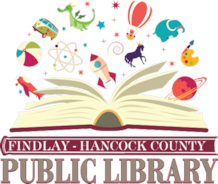| Label | Information |
|---|---|
| Dates & times |
-
|
| Category | Adult Program |
| Age Groups | Adults |
| Location |
PLEASE REGISTER BY CLICKING THE 'REGISTER HERE' LINK BELOW
Join us as we chat with New York Times bestselling author Adam Alter about his new book Anatomy of a Breakthrough: How to Get Unstuck When It Matters Most. Almost everyone feels stuck in some way. Whether youre muddling through a midlife crisis, wrestling with writers block, trapped in a thankless job, or trying to remedy a fraying friendship, the resulting emotion is usually a mix of anxiety, uncertainty, fear, anger, and numbness. But it doesnt have to be this way. Anatomy of a Breakthrough is the roadmap we all need to escape our inertia and flourish in the face of friction. The solution to becoming unstuck rests on a process that Alter calls a friction audita systematic procedure that uncovers why a person or organization is stuck and then suggests a path to progress. The friction audit states that people and organizations get unstuck when they overcome three sources of friction: HEART (unhelpful emotions); HEAD (unhelpful patterns of thought); and HABIT (unhelpful behaviors).
Artfully weaving together scientific studies, anecdotes, and interviews, Alter teaches us that getting stuck is a feature rather than a glitch on the road to thriving, but with the right tweaks and corrections, we can reach even our loftiest targets.
Join us as we chat with New York Times bestselling author Adam Alter about his new book Anatomy of a Breakthrough: How to Get Unstuck When It Matters Most. Almost everyone feels stuck in some way. Whether youre muddling through a midlife crisis, wrestling with writers block, trapped in a thankless job, or trying to remedy a fraying friendship, the resulting emotion is usually a mix of anxiety, uncertainty, fear, anger, and numbness. But it doesnt have to be this way. Anatomy of a Breakthrough is the roadmap we all need to escape our inertia and flourish in the face of friction. The solution to becoming unstuck rests on a process that Alter calls a friction audita systematic procedure that uncovers why a person or organization is stuck and then suggests a path to progress. The friction audit states that people and organizations get unstuck when they overcome three sources of friction: HEART (unhelpful emotions); HEAD (unhelpful patterns of thought); and HABIT (unhelpful behaviors).
Artfully weaving together scientific studies, anecdotes, and interviews, Alter teaches us that getting stuck is a feature rather than a glitch on the road to thriving, but with the right tweaks and corrections, we can reach even our loftiest targets.
